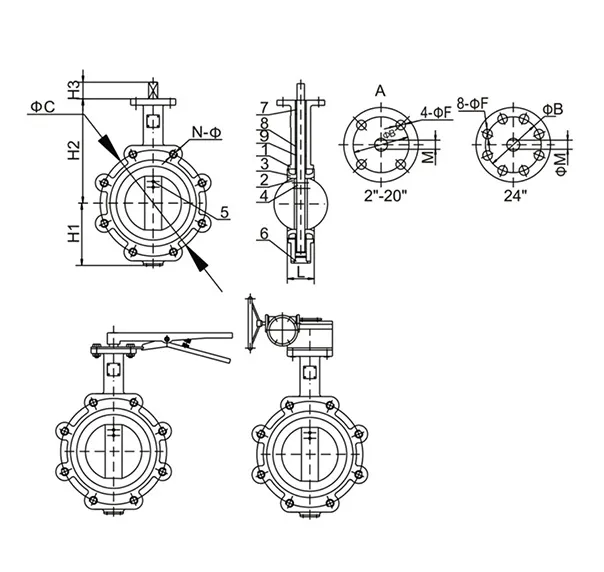Dec . 04, 2024 10:18 Back to list
Single Plate Check Valve Design and Applications for Fluid Control Systems
Understanding Single Plate Check Valves Function, Design, and Applications
In various industrial and mechanical systems, maintaining the direction of fluid flow is crucial for operational efficiency and equipment longevity. One of the essential components designed for this purpose is the single plate check valve. This article delves into the function, design, and applications of single plate check valves, explaining their importance in various industries.
What is a Single Plate Check Valve?
A single plate check valve is a mechanical device that allows fluid (liquid or gas) to flow in one direction while preventing backflow. It consists of a single disc or plate that pivots on a hinge or a pin. When fluid flows in the intended direction, the plate swings open, allowing unrestricted flow. However, if there is a reverse flow, the plate closes due to gravity or fluid pressure, effectively sealing off the reverse direction.
Functionality
The primary function of a single plate check valve is to maintain the desired flow direction of fluids, a critical function in many applications. By preventing backflow, these valves protect pumps and other equipment from damage that can occur due to reverse flow. Additionally, they help maintain system efficiency and prevent contamination, making them essential in various sectors, including water treatment, oil and gas, and chemical processing.
One of the notable features of single plate check valves is their relatively low pressure drop compared to other types of check valves. This advantage is due to the streamlined flow path created by the single plate design, making it ideal for applications that demand high flow rates with minimal energy loss.
Design Features
Single plate check valves are characterized by their simple yet effective design
. Key features include1. Compact Size These valves are typically smaller and lighter than other check valves, facilitating easier installation and integration into existing systems.
2. Pivoting Mechanism The plate is designed to pivot around a fixed point, allowing for quick response to changes in flow direction. The design often includes a spring mechanism to ensure the plate returns to a closed position swiftly when the forward flow stops.
single plate check valve

3. Material Selection Depending on the application, single plate check valves can be constructed from various materials, including stainless steel, brass, plastic, and cast iron. The choice of material influences durability, corrosion resistance, and compatibility with the fluid being transported.
4. Leakage Prevention Single plate check valves are designed to minimize leakage in the closed position, ensuring that backflow is effectively prevented and system integrity is maintained.
Applications
The versatility of single plate check valves makes them suitable for a wide range of applications. Some common uses include
- Water Supply Systems In municipal and industrial water distribution systems, these valves prevent reverse flow, ensuring that water remains in designated pipelines and does not contaminate supply sources.
- Oil and Gas Industry Single plate check valves are essential in pipelines and processing systems to avoid backflow that may lead to hazardous situations or equipment damage.
- HVAC Systems In heating, ventilation, and air conditioning systems, they help regulate airflow and prevent backdrafts, maintaining system efficiency and performance.
- Chemical Processing The chemical industry often utilizes these valves to prevent backflow of potentially hazardous or corrosive substances, thereby enhancing safety and operational reliability.
Conclusion
In conclusion, single plate check valves serve an indispensable role in modern fluid systems. Their simple yet effective design allows for reliable flow control, preventing backflow and ensuring the safety and efficiency of various operations. As industries continue to evolve, the demand for such innovative and efficient components will likely expand, underscoring the importance of understanding and utilizing single plate check valves across different applications. Whether in water treatment plants, oil refineries, or HVAC systems, these valves are a critical element in safeguarding equipment and maintaining system integrity.
Share
-
Reliable Wafer Type Butterfly Valves for Every IndustryNewsJul.25,2025
-
Reliable Flow Control Begins with the Right Ball Check ValveNewsJul.25,2025
-
Precision Flow Control Starts with Quality ValvesNewsJul.25,2025
-
Industrial Flow Control ReliabilityNewsJul.25,2025
-
Engineered for Efficiency Gate Valves That Power Industrial PerformanceNewsJul.25,2025
-
Empowering Infrastructure Through Quality ManufacturingNewsJul.25,2025